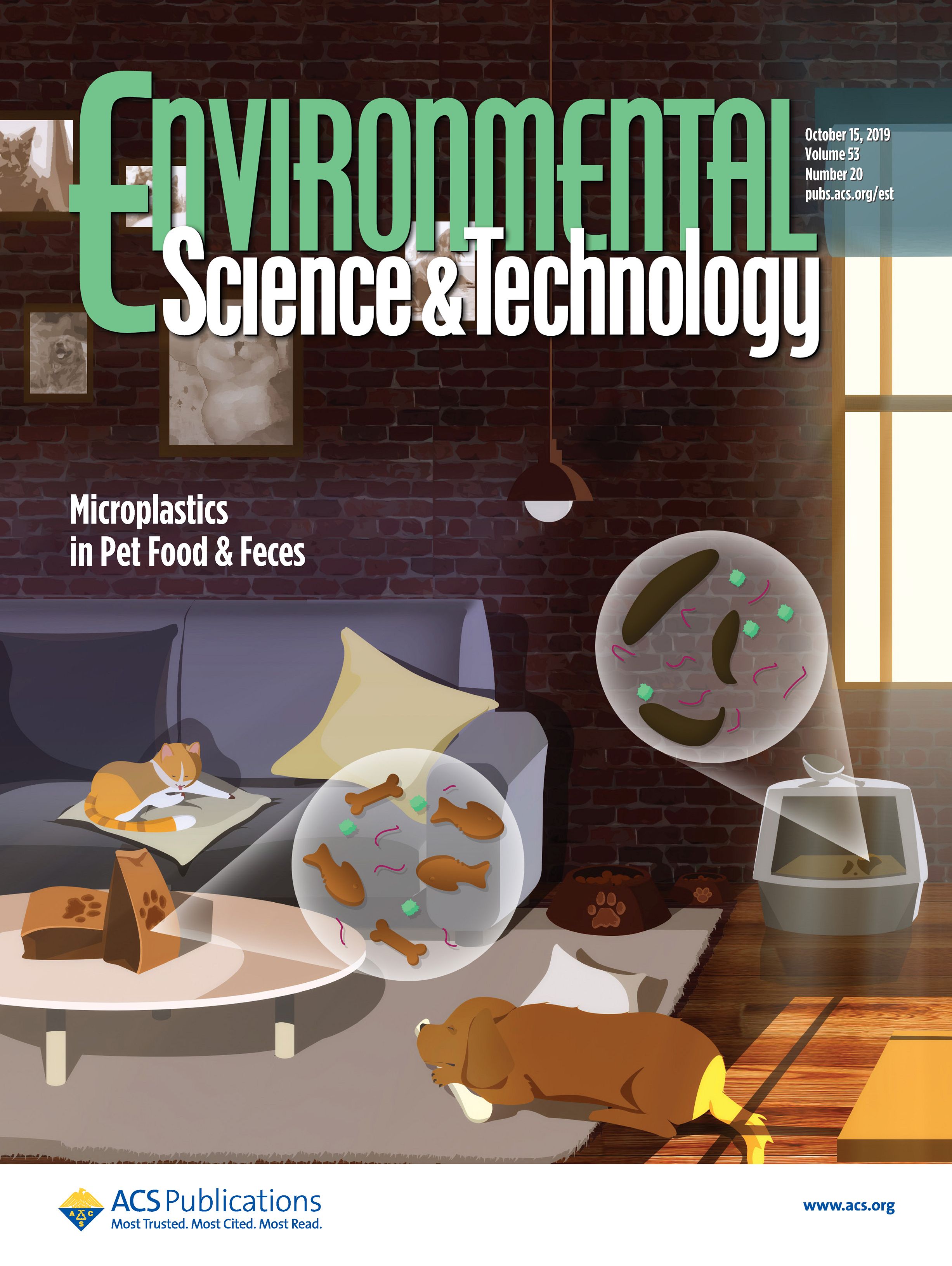
Title: Polyethylene Terephthalate and Polycarbonate Microplastics in Pet Food and Feces from the United States
Abstract: Human exposure to microplastics has been a topic of interest, but measurements of exposure are limited. Pet animals are sentinels of human exposure, as they share a common living environment with humans. In this study, 58 pet (cat and dog) foods and 78 pet feces samples were collected from Albany, NY, USA, for the analysis of polyethylene terephthalate (PET) and polycarbonate (PC) by alkali-assisted thermal depolymerization and liquid chromatography-tandem mass spectrometry (HPLC-MS/MS) methods. PET was detected at concentrations in the range of <1,500 ng/g to 12,000 ng/g (median: <1,500 ng/g) and <1,500 to 4,600 ng/g (median: <1,500 ng/g) in cat and dog foods, respectively. The concentrations of PET in cat (<2,300–340,000 ng/g, median: 61,000 ng/g) and dog (7700–190,000 ng/g, median: 30,000 ng/g) feces were 1–2 orders of magnitude higher than those in pet food samples. A significant positive correlation was found between the concentrations of the monomers (i.e., TPA and BPA) and the corresponding MPs in cat feces. The calculated mean estimated daily intake of PET and PC (calculated from pet food) was lower than that of the mean cumulative daily intake (calculated from pet feces), which suggested that diet is a minor source of exposure to PET and PC in pets.